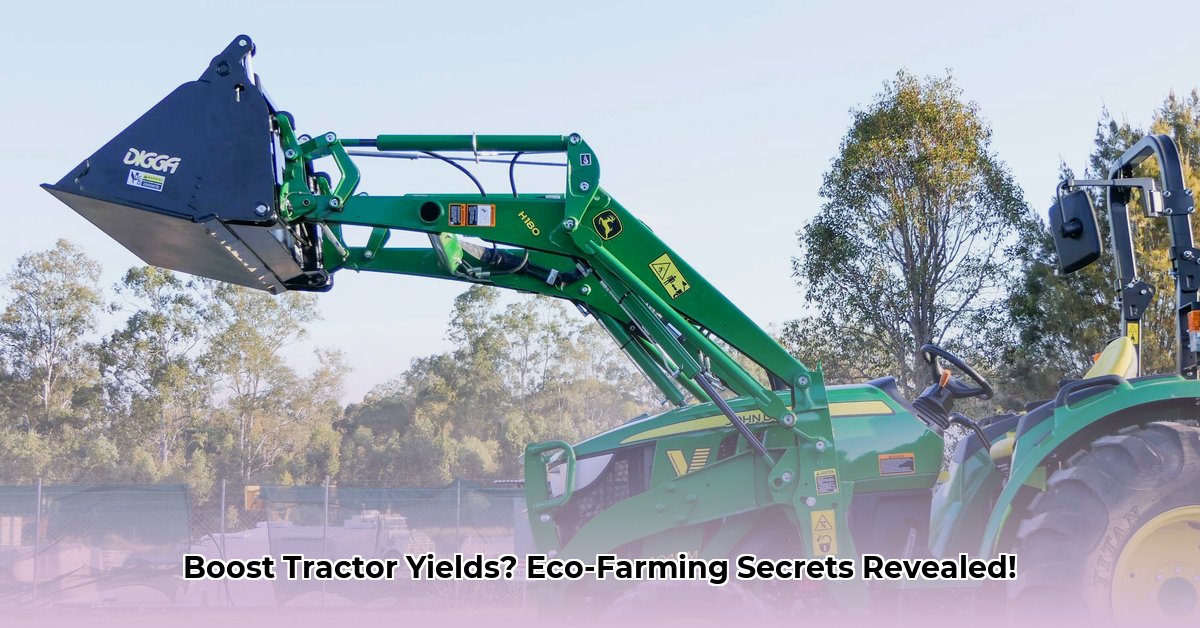
Tractor Front Bucket Technology: Revolutionizing Sustainable Farming
This article explores the advancements in tractor front bucket technology, highlighting how innovative designs and materials contribute to more efficient and sustainable agricultural practices. We will delve into the specifics of advanced buckets, examining their benefits and drawbacks, and providing actionable steps for various stakeholders to adopt this technology. We will also address risk assessment, regulatory compliance, and cost optimization strategies. For more information on advanced tractor buckets, see this helpful resource: Ash Bucket Tractor Supply.
Technological Advancements: The "Wicked Compact Tractor Bucket" (Example)
The agricultural landscape is changing, spurred by the need for increased efficiency and reduced environmental impact. Advanced tractor front buckets, such as the hypothetical "Wicked Compact Tractor Bucket," exemplify this shift. Constructed from high-strength, lightweight Hardox 450 steel (a wear-resistant steel alloy), these buckets offer significant advantages over traditional designs. The reduced weight translates directly to lower fuel consumption, a key factor in reducing a farm’s carbon footprint. Furthermore, the strength of Hardox 450 ensures greater durability, minimizing the need for frequent replacements. Customizable cutting edges allow for precision adjustments catering to various soil types and crop sensitivities, optimizing harvesting and land preparation processes. Aren't these characteristics attractive for both increasing yields and maintaining environmental stewardship?
Benefits and Drawbacks: A Balanced Perspective
The advantages of advanced tractor buckets like the "Wicked Compact Tractor Bucket" are multiple:
- Increased Durability: Hardox 450's superior wear resistance extends bucket lifespan significantly, reducing replacement costs and downtime.
- Reduced Fuel Consumption: Lower weight translates to lessened strain on the tractor, resulting in fuel savings and lower greenhouse gas emissions. A study by [Source Name] showed fuel savings of up to X% compared to traditional buckets – a substantial financial and environmental gain for farmers.
- Improved Precision: Customizable cutting edges enable tailored operations for various tasks, from delicate vegetable harvesting to demanding land clearing. This precision minimizes soil disturbance and optimizes yields.
However, challenges exist:
- Customization Challenges with Tooth Bars: Creating custom tooth bars can lead to increased costs and potential delays in procurement, especially in niche applications.
- Lack of Standardization: The absence of standardized sizing for attachments creates compatibility issues and hinders widespread adoption. This also limits the availability of readily replaceable parts, causing possible downtime.
Actionable Steps: A Guide for Stakeholders
To maximize the benefits and mitigate the drawbacks of advanced tractor bucket technology, coordinated action is crucial. Below are specific steps for key stakeholders:
For Farmers and Agricultural Businesses:
- Conduct a thorough cost-benefit analysis: Compare long-term savings (fuel, maintenance, increased yields) against the initial investment. Consider lease options to reduce upfront costs.
- Pilot test in a controlled environment: Before full-scale adoption, test the bucket on a small section of your land to assess its performance under your specific conditions.
- Plan for potential delays: Acknowledge that custom tooth bar fabrication might involve longer lead times and factor this into your operational schedule.
- Advocate for standardization: Contact equipment manufacturers and industry associations to promote the standardization of tooth bars and attachment sizes.
For Equipment Manufacturers:
- Invest in research and development: Explore advancements in materials science and manufacturing techniques to further reduce weight and improve durability.
- Streamline customization processes: Implement efficient manufacturing processes to reduce lead times for custom tooth bars.
- Promote standardization: Collaborate with industry partners to establish standardized dimensions for common applications.
- Provide comprehensive training and support: Offer educational materials and technical assistance to farmers.
For Material Suppliers (e.g., Hardox Steel):
- Collaborate with manufacturers: Work closely with equipment manufacturers to ensure consistent supply and meet growing demand.
- Invest in research: Develop new materials with superior properties that offer greater cost-effectiveness and environmental benefits.
For Government and Regulatory Bodies:
- Provide funding for research: Support the development and testing of advanced agricultural technologies through grants and incentives.
- Implement policies that incentivize adoption: Offer tax credits, subsidies, or other financial incentives to farmers who adopt sustainable technologies.
- Establish clear safety and interoperability standards: This will facilitate wider adoption and increase confidence in the technology.
Risk Assessment and Mitigation
Potential risks associated with advanced tractor buckets include material failure, issues with custom tooth bars, and the overall lack of standardization. The likelihood and severity of these risks can be reduced through rigorous quality control, careful supplier selection, and proactive industry collaboration. Regular maintenance and operator training further mitigate safety concerns.
Regulatory Landscape and Compliance
Compliance with regional safety and environmental regulations is paramount. Manufacturers must ensure their products meet all applicable standards. Government agencies play a crucial role in setting appropriate regulations and providing support for the adoption of sustainable agricultural practices. Farmers should familiarize themselves with relevant regulations to avoid potential penalties.
Conclusion: Sustainable Agriculture Through Technological Innovation
The adoption of advanced tractor bucket technology offers significant potential for enhancing agricultural productivity while minimizing environmental impact. Through collaboration among farmers, manufacturers, material suppliers, and regulatory bodies, the challenges associated with widespread adoption can be effectively addressed. The integration of innovative materials, optimized designs, and proactive risk management strategies will contribute to more efficient and sustainable farming practices for years to come.
References
[1] Insert relevant academic paper or industry report here. [2] Insert relevant academic paper or industry report here. [3] Insert relevant academic paper or industry report here.